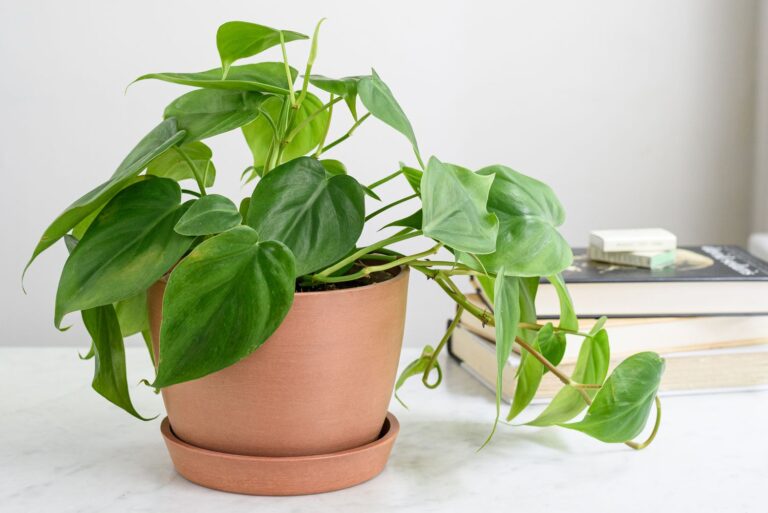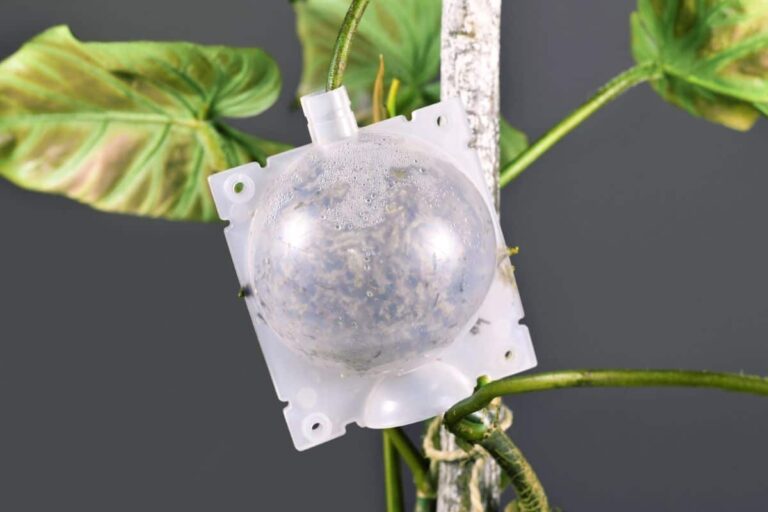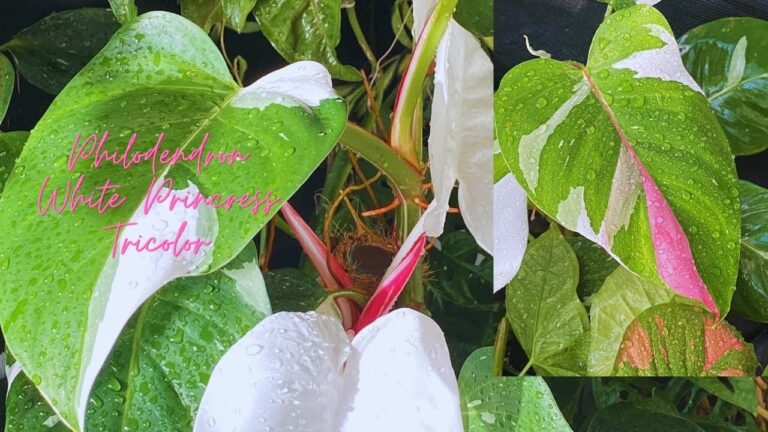Philodendron Name Meaning: Greek Etymology & Symbolism Explained
The name “philodendron” encodes a 3,000-year-old Greek love story in just four syllables. From the ancient word philos (φίλος) meaning “dear” or “beloved” and dendron (δένδρον) for “tree,” these plants literally embody “tree-loving” behavior—a botanical romance that explains their climbing, clinging nature in tropical rainforests.
The Greek Foundation: Philo + Dendron = Tree Lover
The botanical name “Philodendron” represents one of the most perfectly descriptive plant names in scientific nomenclature. Derived from two ancient Greek words, the compound creates a precise botanical characterization that has remained unchanged since its formal introduction in 1830.
The first element, “philo-” (φίλος), carries profound meaning beyond simple “love.” In classical Greek, philos denotes “dear,” “beloved,” or “loved one,” establishing a relationship of affection rather than mere preference. The verb form, philein (φιλεῖν), means “to love” or “to regard with affection,” suggesting an active emotional connection rather than passive appreciation.
The second component, “dendron” (δένδρον), translates directly to “tree” but carries deeper linguistic significance. The word traces back to the Proto-Indo-European root *deru-, meaning “to be firm, solid, steadfast”—the same root that gave English words like “tree,” “true,” and “trust.” This etymological connection reveals ancient recognition of trees as symbols of stability and permanence.
When Austrian botanist Heinrich Wilhelm Schott coined the term “Philodendron” in 1830, he deliberately chose this compound to capture the plant’s essential nature. The plants literally “love trees” through their epiphytic growth pattern, using trees for support while absorbing moisture and nutrients from the surrounding environment.
Ancient Greek Linguistic Context: The Philo- Prefix
The prefix “philo-” represents one of the most productive word-forming elements in ancient Greek, appearing in numerous compounds that describe loving relationships or preferences. Understanding this linguistic pattern provides deeper insight into the philodendron name.
Greek philosophers recognized different types of love, with philos representing affectionate love between friends or companions. This contrasts with eros (romantic love) and agape (unconditional love). The philo- prefix appears in words like “philosophy” (love of wisdom), “philanthropy” (love of humanity), and “philharmonic” (love of harmony).
The botanical application of “philo-” to describe plant behavior reflects Greek understanding of natural relationships. Native Greek speakers would have intuitively understood philodendron as a plant that forms affectionate bonds with trees, climbing and embracing them as a loved companion might embrace a friend.
Dendron: From Greek Forests to Scientific Classification
The Greek word “dendron” carried both literal and symbolic meaning in ancient culture. Trees were not merely botanical entities but represented pillars of the natural world, connecting earth and sky. The word’s inclusion in “philodendron” reflects this cultural reverence.
Ancient Greek texts frequently personified trees, describing them as living beings with spirits and consciousness. The dryads—tree nymphs—represented this intimate connection between humans and trees. When Schott chose “dendron” for his plant classification, he tapped into this rich cultural tradition of tree reverence.
The scientific use of “dendron” extends beyond philodendron to many botanical terms, including “rhododendron” (rose-tree) and “dendrology” (the study of trees). This consistency creates a linguistic bridge between scientific terminology and its Greek origins, maintaining continuity across centuries of botanical study.
Historical Evolution: From Ancient Greek to Modern Latin
The journey of “philodendron” from ancient Greek compound to modern scientific name illustrates the enduring influence of classical languages on botanical terminology. The transformation involved several linguistic adaptations that preserved meaning while adapting to scientific conventions.
When Schott established the genus name in 1830, he followed Linnaean conventions by creating a Latinized form of the Greek compound. The original Greek φιλόδενδρον (philodendron) became the Latin “Philodendron,” with capitalization and italicization conventions that distinguish scientific names.
The first documented use of the term in English appeared in 1837, just seven years after Schott’s formal classification. This rapid adoption reflects the plant’s growing popularity among European horticulturists and the established practice of using scientific Latin for plant classification.
The consistency of the name over nearly two centuries demonstrates its aptness as a descriptor. While other plant names have undergone revision or replacement, “Philodendron” has remained stable, a testament to its accurate characterization of the genus.
Cultural Interpretations Across Civilizations
Beyond its Greek origins, the philodendron name has acquired rich cultural significance across different societies, each interpreting the “tree-lover” concept through their own lens of understanding and experience.
Indigenous South American Perspectives
In the plant’s native habitat, indigenous cultures developed sophisticated understanding of philodendron behavior long before European classification. The Emberá people of Panama and Colombia recognized these plants as “tree companions,” understanding their role in forest ecology. Their traditional ecological knowledge recognizes that philodendrons don’t harm their host trees but rather create beneficial microclimates that support diverse forest life.
This indigenous perspective aligns perfectly with the Greek concept of philos—these relationships represent mutual benefit rather than parasitism. The plants provide habitat for epiphytic organisms while gaining structural support, creating a symbiotic relationship that indigenous peoples observed and respected.
Ancient Egyptian Symbolism
Ancient Egyptian culture, encountering philodendrons through trade networks, integrated them into their symbolic framework of life and regeneration. The Egyptians interpreted the plant’s climbing behavior as a metaphor for spiritual ascent—the soul’s journey toward enlightenment.
The heart-shaped leaves of Philodendron hederaceum resonated with Egyptian concepts of the heart (ib) as the seat of intelligence and emotion. They saw in the philodendron’s persistent climbing a representation of the heart’s capacity for growth and transformation.
Victorian Era Romantic Interpretation
During the Victorian period, when philodendron cultivation became fashionable among European aristocracy, the “tree-lover” concept took on romantic overtones. Victorian gardeners interpreted the plant’s climbing behavior as a botanical expression of romantic devotion—the philodendron “embracing” its tree companion with tender affection.
This interpretation influenced Victorian decorative arts, with philodendron motifs appearing in jewelry, textiles, and architectural elements. The plants became symbols of enduring love, their persistent growth representing the strength of genuine affection.
Modern Eastern Philosophy
Contemporary Eastern philosophy, particularly Feng Shui practice, interprets philodendrons through the lens of natural harmony. The “tree-lover” concept aligns with principles of mutual support and beneficial relationships.
In Feng Shui applications, philodendrons are believed to enhance relationship luck when placed in partnership sectors of homes or offices. The plant’s climbing behavior symbolizes upward growth in relationships, while its heart-shaped leaves represent love and emotional connection.
Cross-Linguistic Variations and Translations
The Greek compound “philodendron” has been adopted across languages with remarkable consistency, maintaining both pronunciation and meaning. This linguistic stability reflects the name’s precision and the universal recognition of the plant’s tree-loving nature.
Romance languages generally preserve the Greek-Latin hybrid form: Spanish uses “filodendro,” Italian “filodendro,” and French “philodendron.” These adaptations maintain the original two-syllable structure while adapting pronunciation patterns to local phonetic systems.
Germanic languages, including German, Dutch, and the Scandinavian languages, typically retain “Philodendron” unchanged from the Latin form. This preservation reflects the established practice of maintaining scientific names across linguistic boundaries.
Asian languages present interesting adaptations. Chinese uses 蔓 (màn), meaning “vine” or “creeping plant,” capturing the growth habit rather than the Greek etymology. Japanese employs フィロデンドロン (firōdendoron), a phonetic adaptation that preserves the original sound while rendering it accessible to Japanese speakers.
The consistency of meaning across these linguistic variations demonstrates the universality of the philodendron’s tree-loving behavior. Speakers of different languages recognize the same botanical phenomenon and assign similar descriptive meaning.
Symbolic Meanings in Different Cultural Contexts
The “tree-lover” concept has generated rich symbolic interpretations across cultures, each emphasizing different aspects of the plant’s relationship with its arboreal companions.
Fertility and Growth Symbolism
Many cultures interpret the philodendron’s climbing behavior as a fertility symbol, representing the generative power of nature. The plant’s vigorous growth and ability to thrive in diverse conditions symbolize abundance and prosperity.
In agricultural societies, philodendrons were often planted near homes to encourage fertility—both agricultural and human. The plant’s prolific growth was believed to influence surrounding vegetation, creating a microclimate of abundance.
Protection and Purification
Some spiritual traditions view philodendrons as protective plants, their lush foliage creating barriers against negative influences. The “tree-lover” concept extends to human relationships, with philodendrons placed near entrances to welcome beneficial connections.
In purification rituals, philodendron leaves are used to cleanse spaces of negative energy. The plant’s association with trees—considered protective beings in many traditions—enhances its role as a spiritual guardian.
Transformation and Adaptation
The philodendron’s ability to transform from terrestrial to epiphytic growth represents adaptability and resilience. This symbolic meaning has particular relevance in modern contexts, where adaptability is highly valued.
The plant’s metamorphosis from juvenile to adult forms, often involving dramatic changes in leaf shape and size, symbolizes personal growth and transformation. This interpretation resonates with individuals navigating life transitions.
Interconnectedness and Symbiosis
Modern ecological consciousness has embraced the philodendron as a symbol of interconnectedness. The “tree-lover” concept represents the fundamental interdependence of all living beings.
Educational programs use philodendrons to illustrate ecological principles, demonstrating how plants, animals, and environment form integrated systems. The plant becomes a living lesson in environmental stewardship.
Practical Applications of Understanding the Name
Understanding the etymology and meaning of “philodendron” provides practical benefits for successful cultivation, deepening the grower’s relationship with these remarkable plants.
Recognizing Natural Behavior
The “tree-lover” concept explains why philodendrons climb and cling to support structures. Rather than fighting this tendency, successful growers provide appropriate climbing support—moss poles, trellises, or other structures that allow natural vertical growth.
This understanding prevents common cultivation mistakes, such as forcing plants into purely horizontal arrangements or failing to provide adequate support. Recognizing the plant’s evolved behavior enables cultivation that honors its natural inclinations.
Creating Appropriate Growing Conditions
The etymological connection to trees suggests the environmental conditions philodendrons evolved to prefer. Semi-epiphytic growth, filtered light through forest canopies, and consistent moisture levels reflect the plant’s arboreal associations.
Successful cultivation mimics these conditions: bright indirect light, high humidity, and well-draining growing medium that prevents root rot while maintaining adequate moisture. The name literally provides guidance for optimal care.
Understanding Symbolic Significance
For those interested in plant symbolism, understanding the “tree-lover” concept enriches the growing experience. The plant becomes more than decorative—it represents love, connection, and mutual support.
This symbolic awareness can influence placement decisions, with philodendrons chosen for spaces where relationship harmony or growth symbolism is desired. The plant’s presence serves as a reminder of interconnectedness and natural relationships.
Connecting Ancient Wisdom to Modern Horticulture
The persistence of “philodendron” as a name over nearly two centuries connects contemporary plant enthusiasts to ancient Greek understanding of natural relationships. Every time we speak or write the name, we participate in this linguistic continuity.
Modern botanical science has validated the intuitive understanding embedded in the name. Research confirms that philodendrons develop specialized relationships with host trees, creating beneficial microclimates and supporting ecosystem diversity. The ancient “tree-lover” concept accurately describes complex ecological interactions.
This connection between ancient naming and modern science demonstrates the enduring wisdom embedded in classical languages. The Greeks observed natural phenomena, developed precise terminology to describe them, and created linguistic compounds that continue to serve scientific classification.
For contemporary growers, understanding the name’s origins provides a bridge between scientific knowledge and cultural wisdom. The plant becomes a living link between past and present, carrying forward accumulated human understanding of the natural world.
Key Sources:
Etymonline – Philodendron Etymology
Wikipedia – Philodendron Comprehensive Overview
Pacific Horticulture – Cultural Context






